S'gaw Karen Language Overview
Karen is an under-documented language. This is a high-level overview of some of the charicteristics and attributes of the language.
keywords
culture language2022-08-28
S’gaw Karen is part of the Karenic branch of the Sino-Tibetan language family. It’s spoken by a subset of the population in Myanmar, and among refugees in Thailand, and other countries around the world.

St. Paul, Minnesota has possibly the largest population of Karen people in the United States, which is where I was introduced to the language and culture.
Karen is an under-documented language, especially when it comes to grammar rules and syntax. From what I understand, the alphabet was actually created by an American missionary in the 1830s. I have never been a totally fluent speaker, but I was able to learn enough to read, write, and communicate to some degree. I find it fun and interesting to try and learn more about the language.
Language Characteristics
- The alphabet is derived from a subset of Burmese script.
- Text reads from left to right, top to bottom, just as in English.
- The writing system includes vowels, consonants, and tones. Vowels and tones use different syntax than consonants, as opposed to English, where vowels and consonants are used in the same way.
- Punctuation like the period, comma, and quotation marks are used, but that’s mostly it. Spaces are optional.
- Karen is largely monosyllabic, but many nouns and verbs can be combined to form more specific or complex words.
- S’gaw Karen is one of a few other Karenic languages. There are also various accents within the S’gaw Karen family, based on geographic region.
- I would say that the rules around grammar and sentence structure are fairly loose.
Alphabet
There are twenty-five consonants in the alphabet, along with about five double consonants (not pictured below). There are nine vowels, which are placed above, below, or on the right side of a consonant. Karen also uses five different tones, which indicate different voice inflections. In some cases, the tone alone is what differentiates the meaning of one word from another.

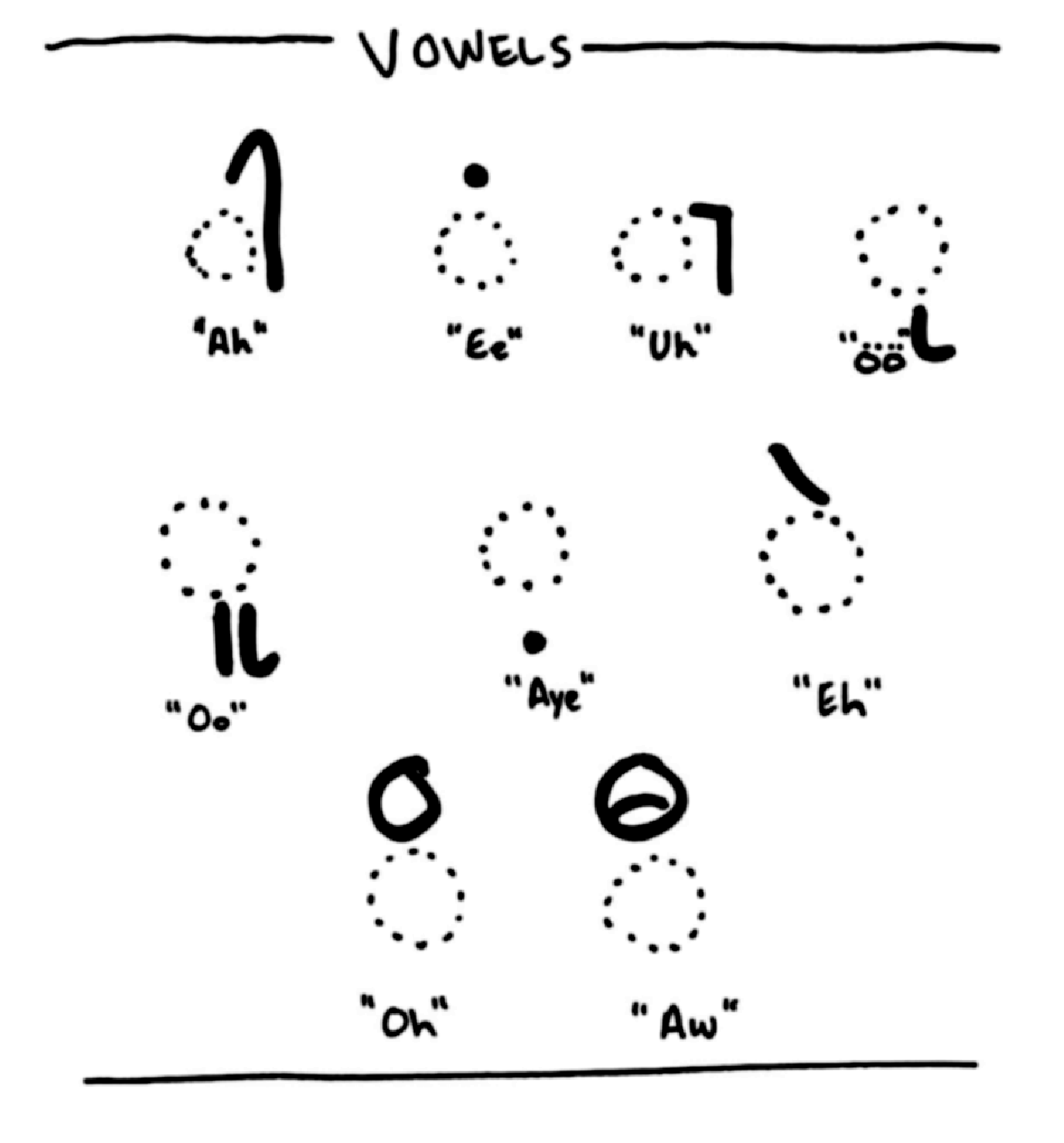
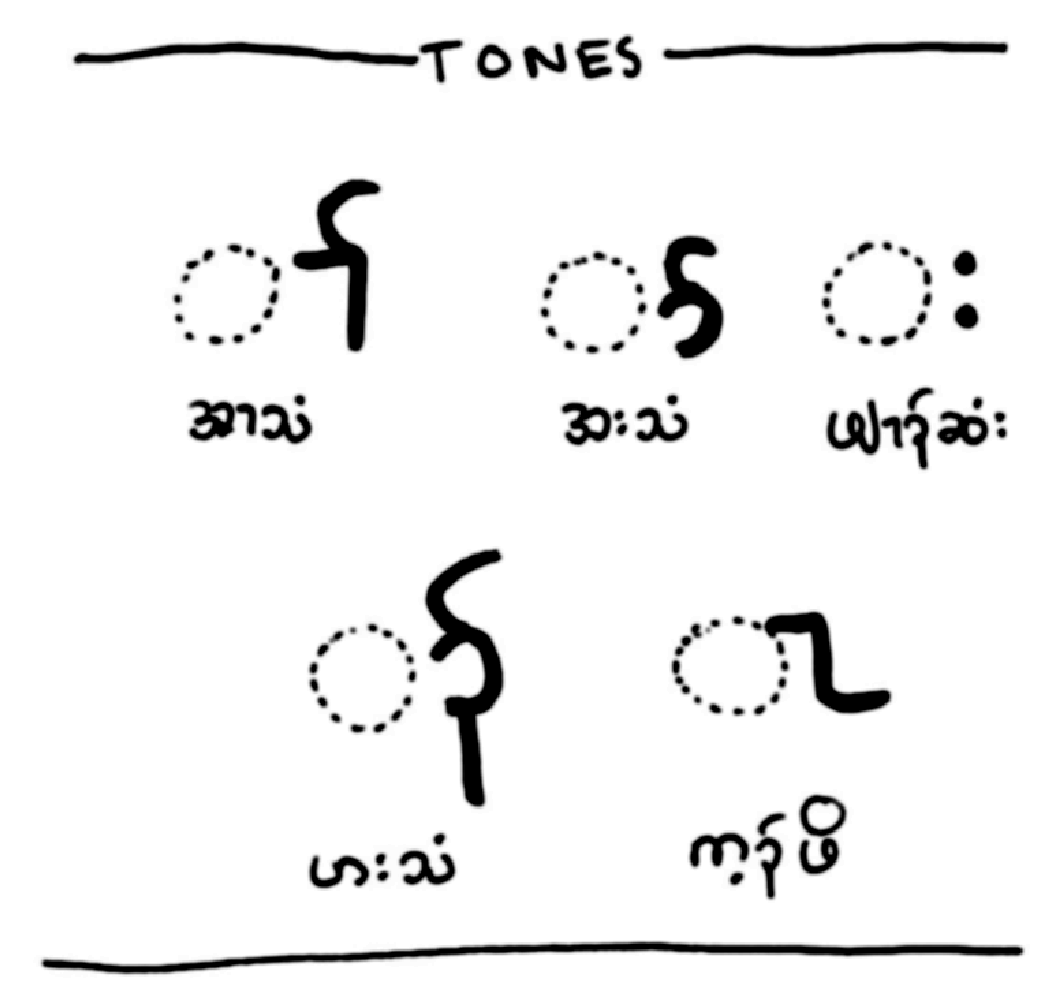
Syllable Formation
Syllables are formed from a combination of consonants, vowels and tones. However, vowels and tones do not have to be present. When no vowel is present, the consonant takes on a sound somewhere between “er” (as in brother), and “uh” (as in ugly).

Consonant cluster example:

Nouns
Karen nouns can be categorized a few different ways. Proper nouns are usually prefixed with a word that indicates the class to which the noun belongs. For example, all city names of the world would begin with the same consonant cluster.

Nouns can also be classified as primitive or derivative. Primitive nouns are frequently just one syllable. They are usually things that are unique in and of themselves. I’m not sure how to describe them, other than by saying that they are generally words such as, book, dog, cat, house, tree, etc.
Derivative nouns are made up of other syllables to create a more specific meaning. Just as classes of proper nouns are classified using a common prefix, many derivative nouns follow similar rules. You can see this in nouns like bed, or chair. The noun is formed by combining a classifying prefix syllable with a verb. The meanings for chair and bed translating literally to, “sit place”, “sleep place”, respectively.
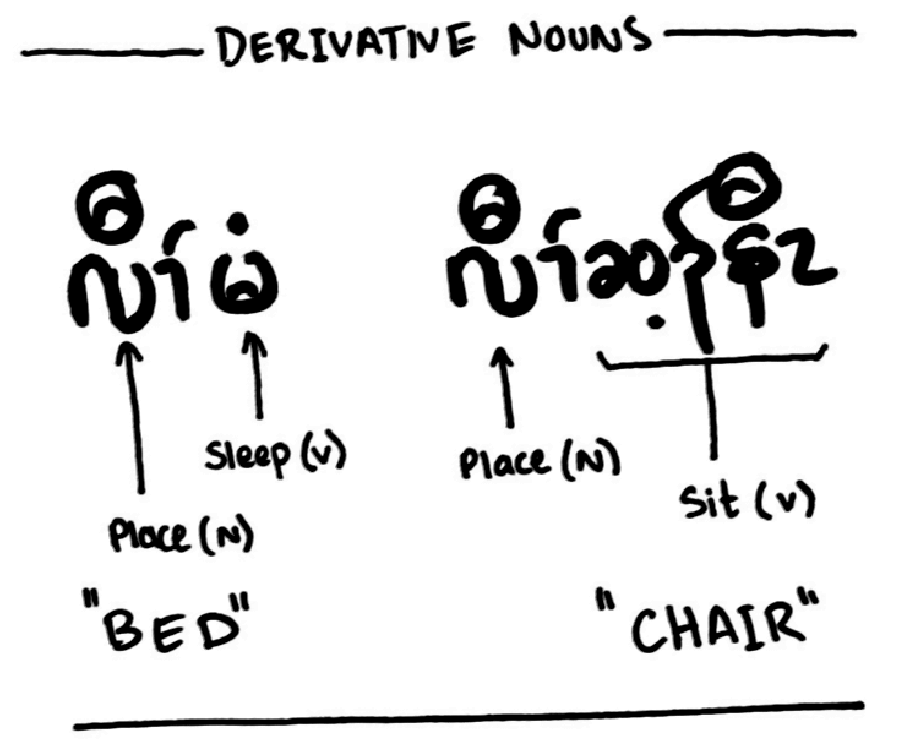
Pronouns
Karen has first, second, and third person pronouns, both singular and plural. Compared to English, the Karen pronouns are not quite as distinct. For example, the third person plural pronouns are all the same. Speakers rely on context, or add more descriptive words, based on what it is they are trying to say. Not only is this true with pronouns, but also many other aspects of the language.
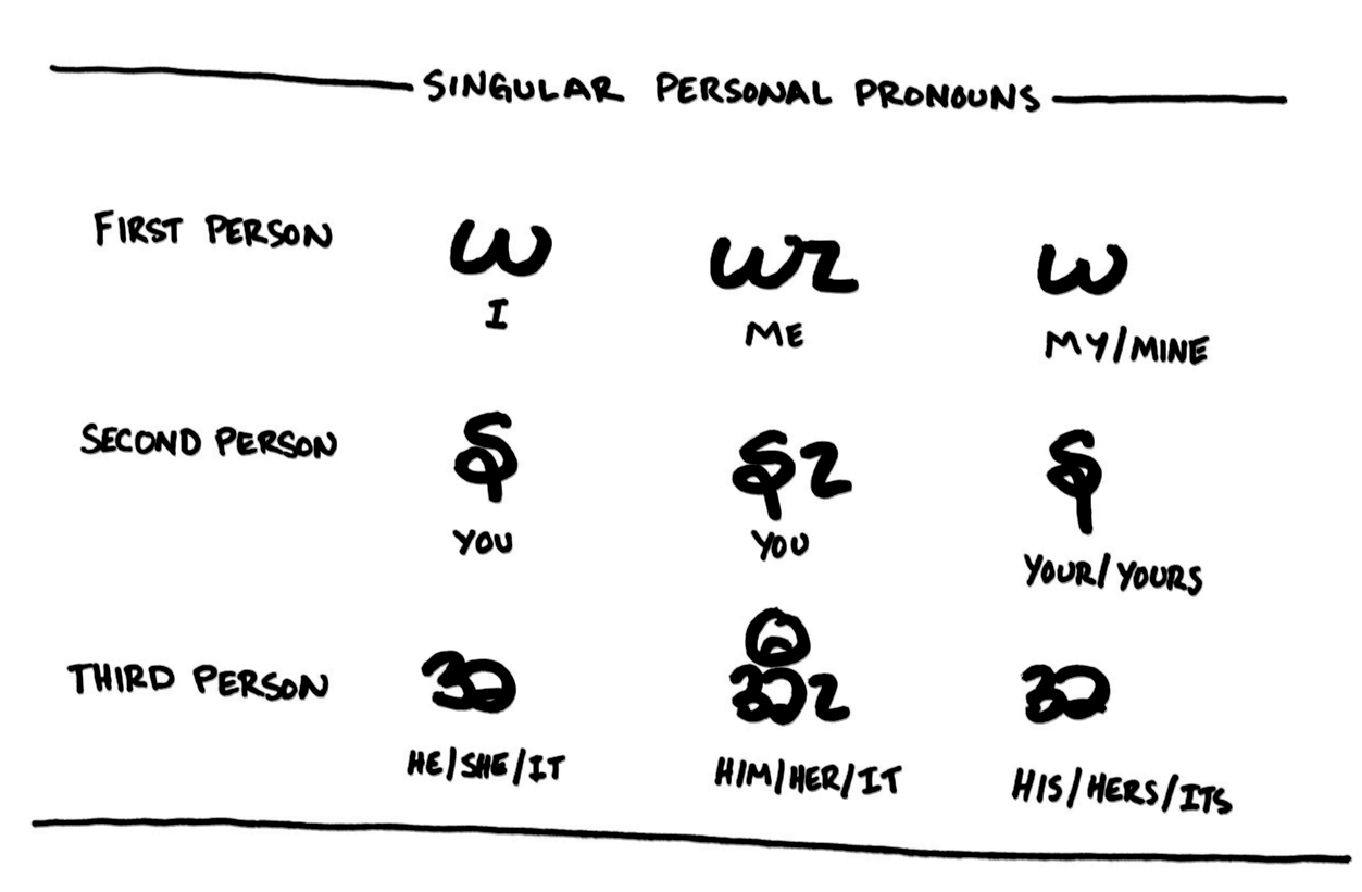
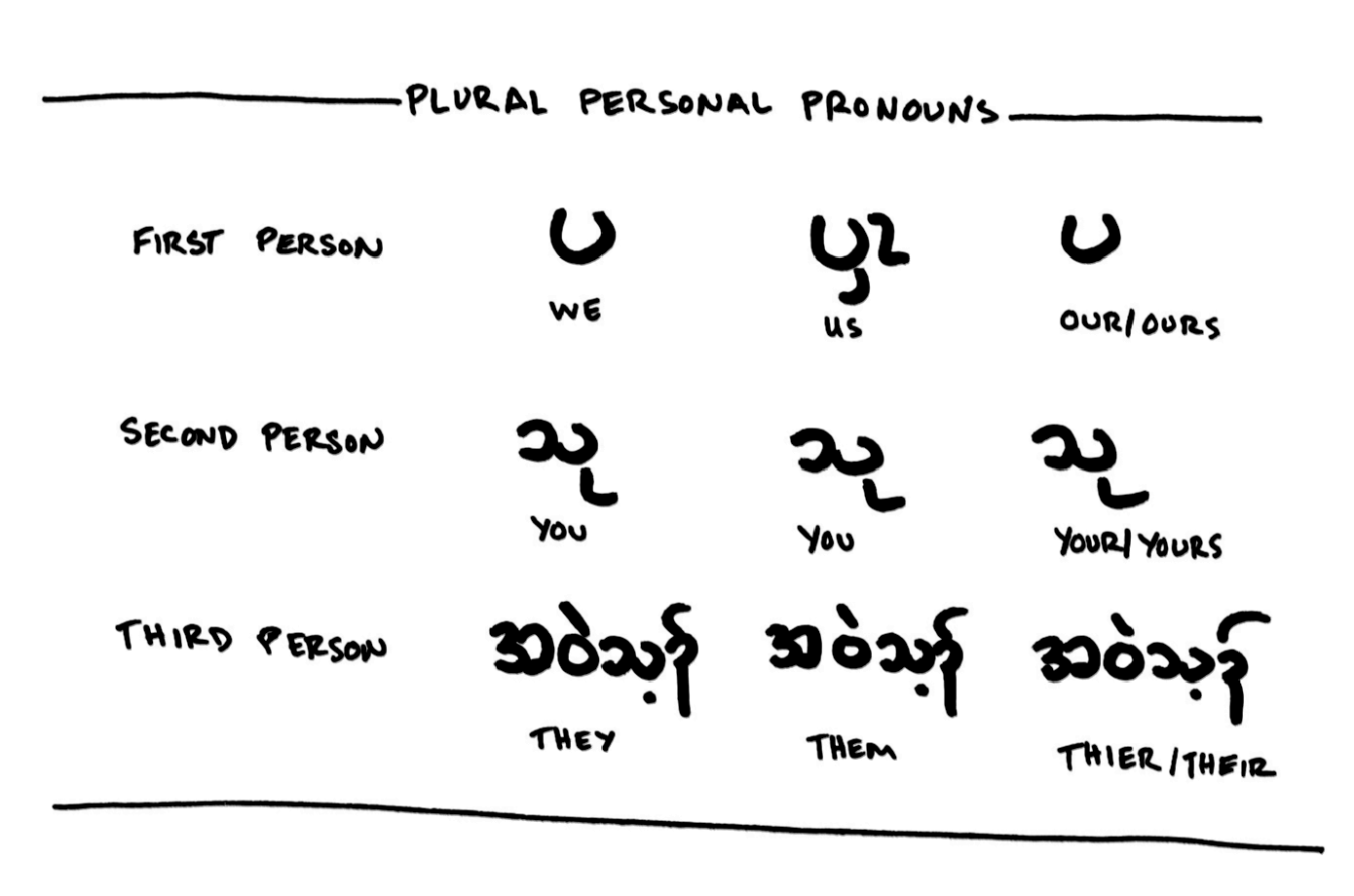
Sentence Structure
The Karen sentence generally follows the, “subject - predicate - object” pattern, as in English. I’m not actually sure if this is always a hard and fast rule. For example, the sentence, I have the money., directly translates to, “I money have”.
Here is an example of a simple sentence: The boat sinks.
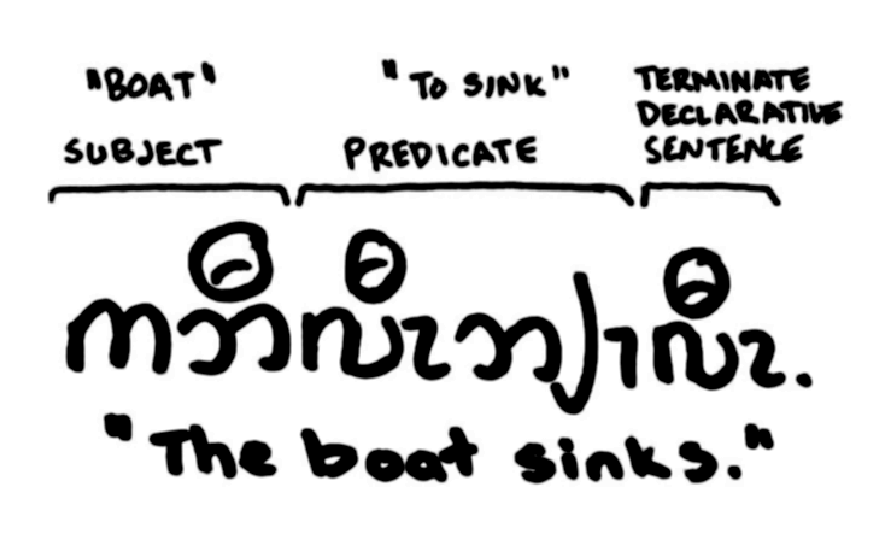
There are a few things to note:
- In English we use the article, the, to basically point to the noun. Karen has similar constructs, but they are not needed in a sentence as simple as this one.
- The last consonant cluster signifies that the sentence is declarative (in other words, used to make a statement, or provide a fact).
- The sentence is simple enough that the exact meaning may actually be ambiguous. More context would be given by the speaker to specify if the boat sank already, or if the boat is currently sinking, or to clarify that just one boat is sinking, etc.
Another example sentence is: The big house is black. Adjectives tend to follow after the nouns that they are describing. Demonstrative adjectives (this and that) are frequently used to help clarify nouns, pronouns, or phrases within a sentence.
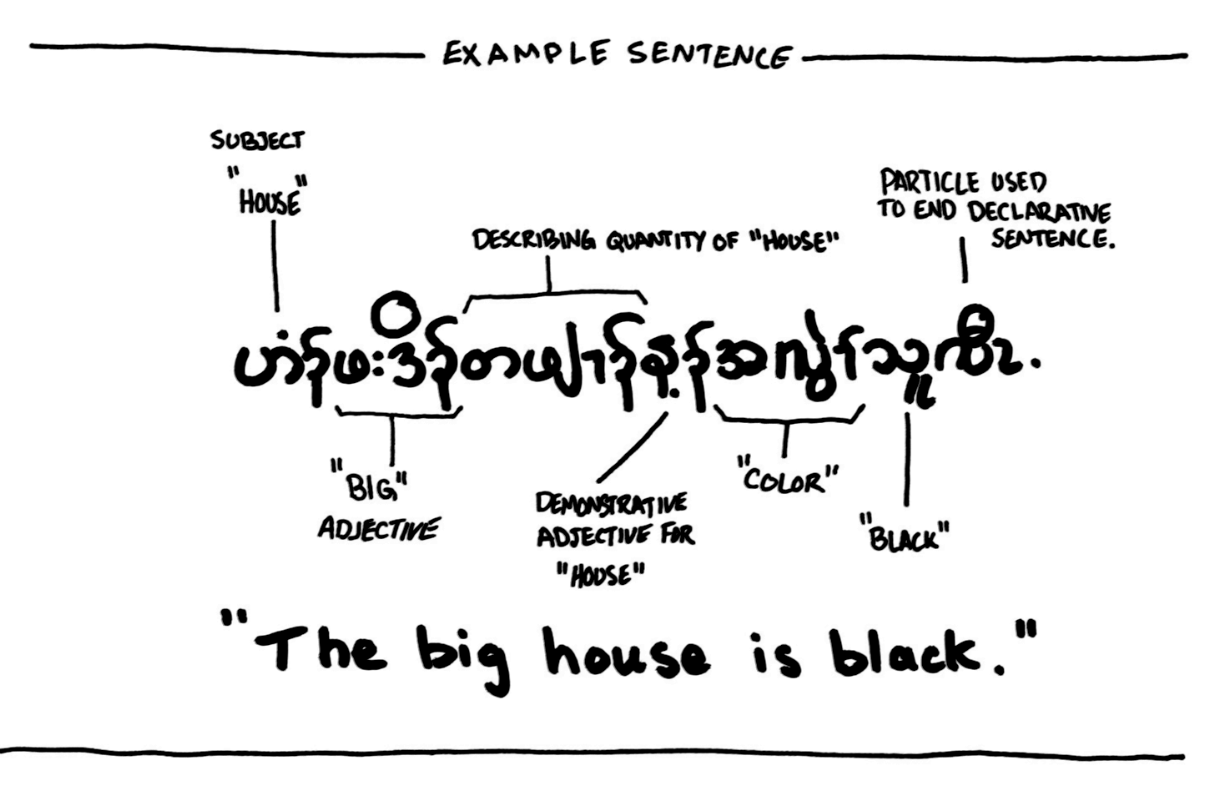
Please sit down. is an example of a sentence that is designed to provide instruction or direction. It ends with a specific consonant cluster to indicate imperative mood. This ending is expected to be included in written sentences, but often times it is not used when speaking, if the mood can be obviously inferred.

Interrogative pronouns and adverbs usually come at the end of a sentence, or sometimes wrap around an adjective. One exception that I can think of would be the adverb, why, which wraps around the entire sentence.
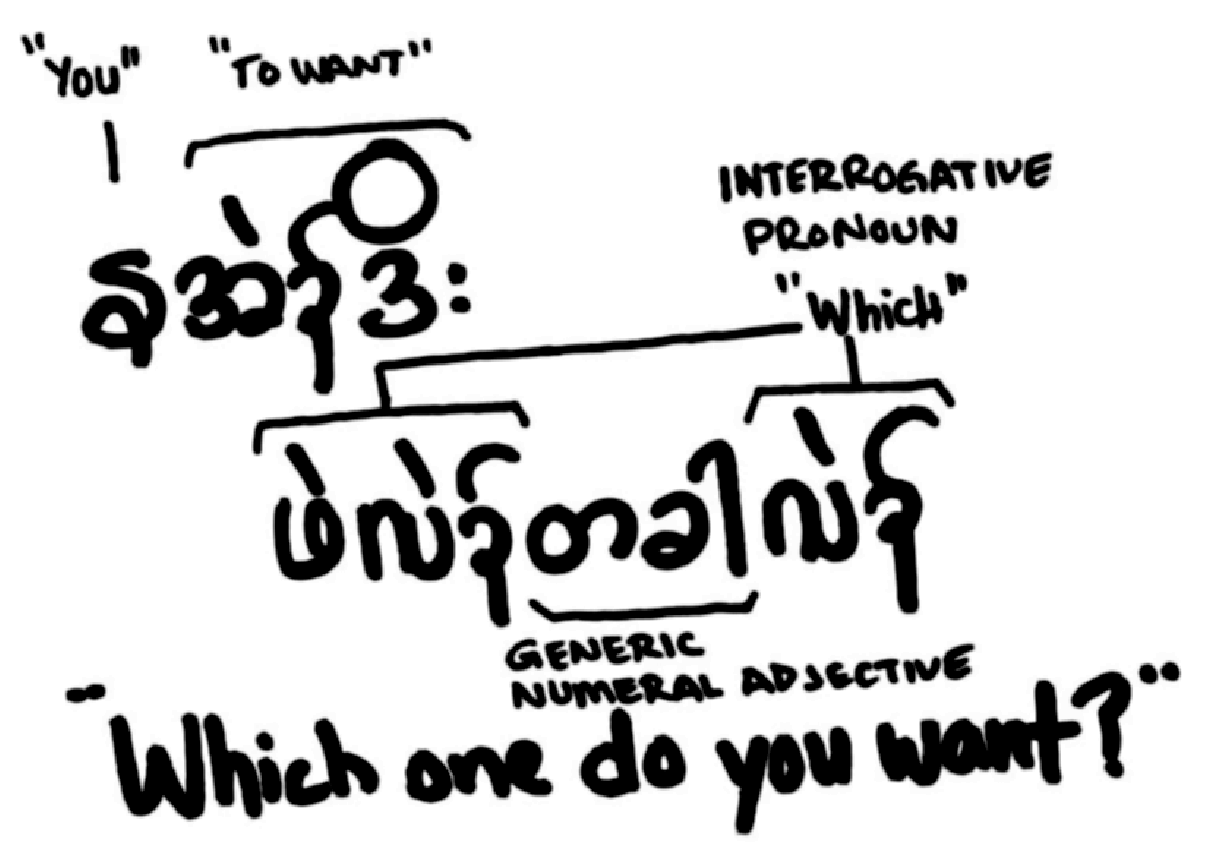
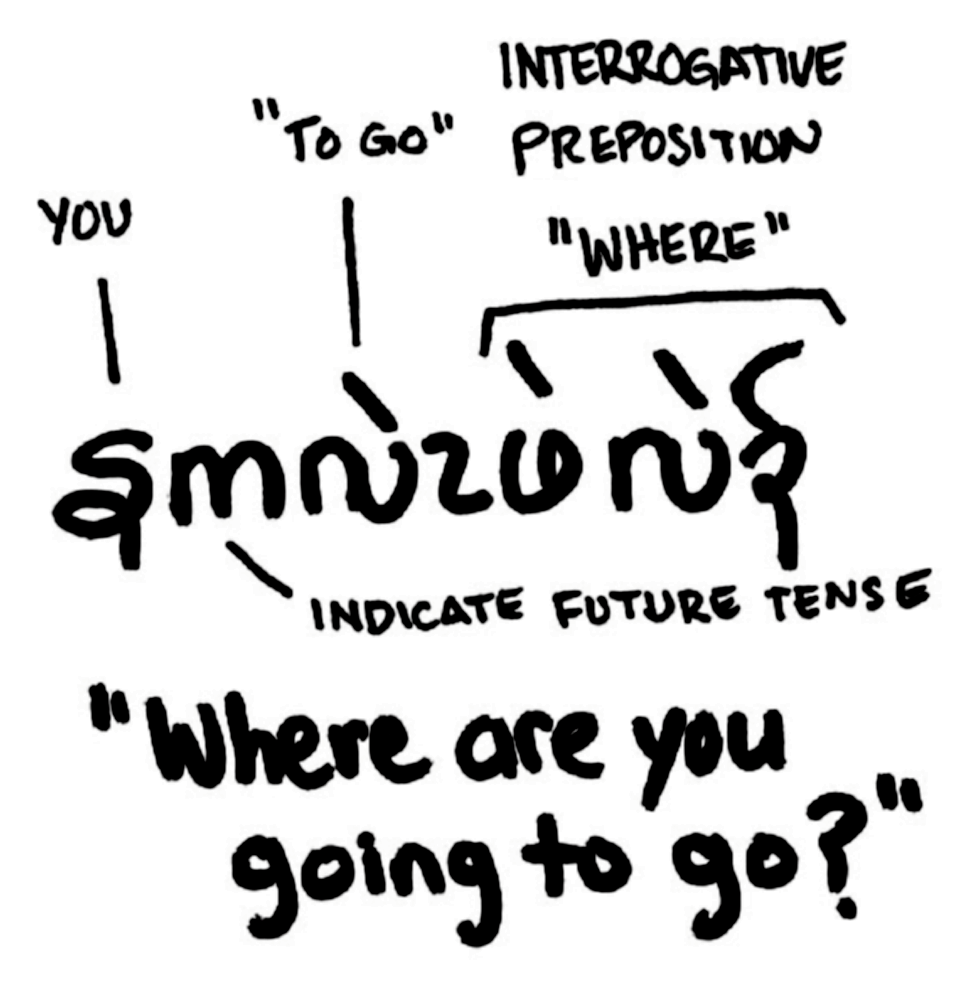
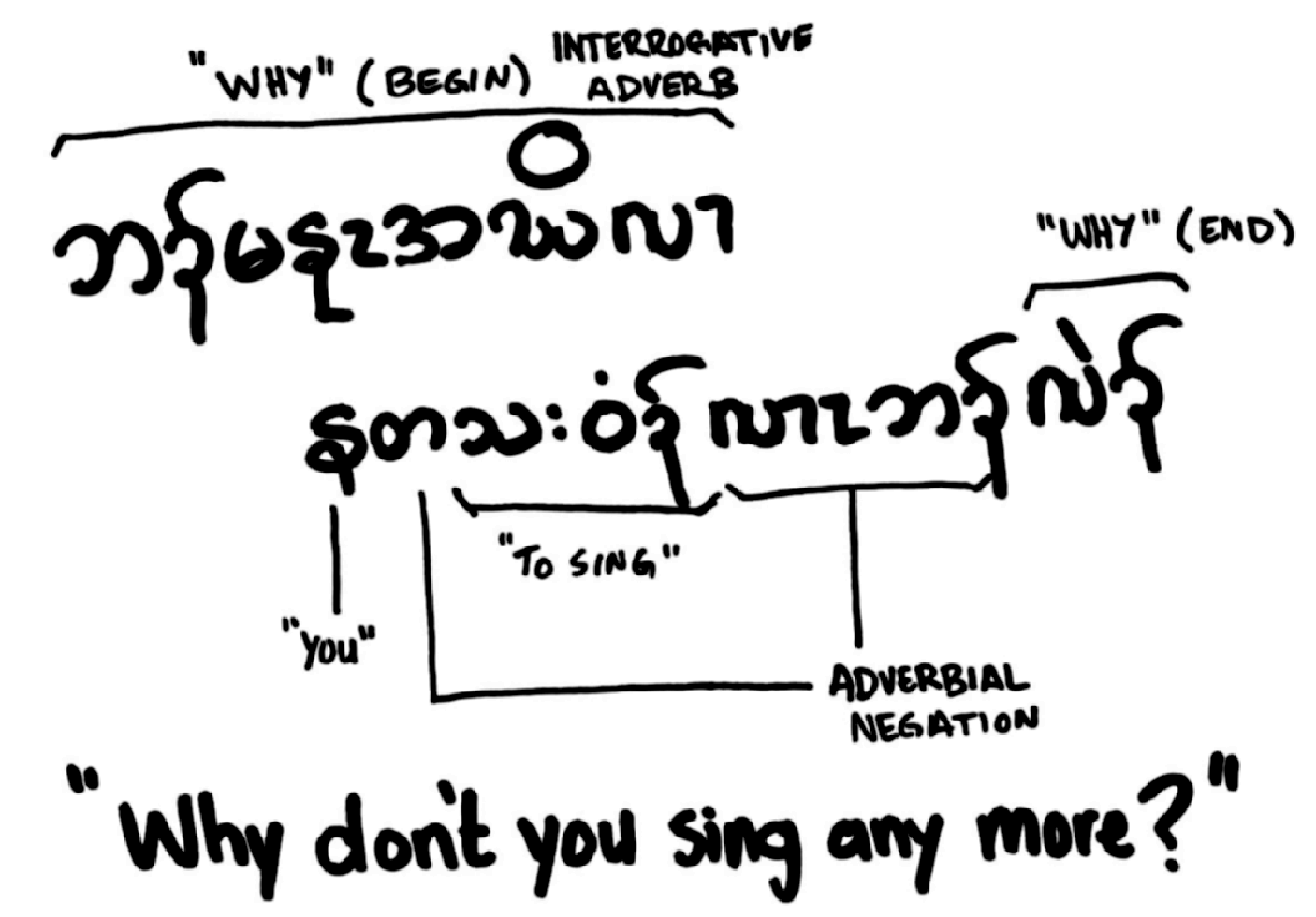
The sentence, Why don’t you sing any more?, also showcases how to convey the notion of not performing the given verb. In this case, not singing anymore.
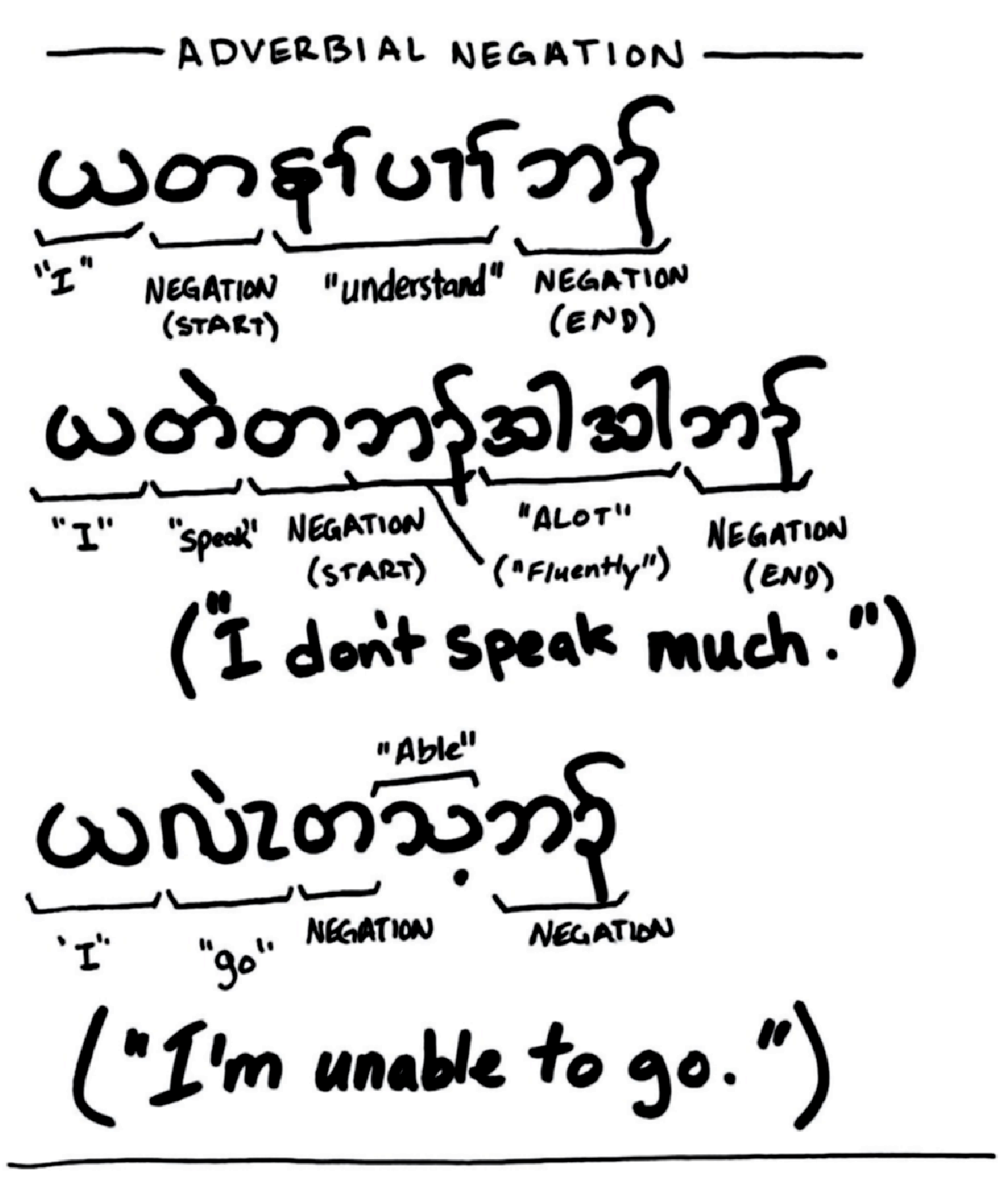
Learning Resources
This is just a short overview of some of the language features. Learning resources are pretty scarce, but there are some helpful things out there on the web. Someday I hope to put together a more official guide to help English speakers learn Karen, and vice versa. These are some of the books that I can recommend:
- Karen Vernacular Grammar. J. Wade. American Mission Press. Maulmain. 1861.
- A Grammar of the Sgaw Karen First Edition, Reverend David Gilmore. American Baptist Mission Press. Rangoon. 1898.
- The Drum Dictionary: English - Sgaw Karen. Drum Publication Group. 2014.
- Drum Karen - English Student Dictionary. Drum Publication Group. 2008.